History and heritage among the ruins at Dripping Springs Natural Area
While nature reclaims ruins of a hotel and health resort in the Organ Mountains of southern New Mexico, people continue to use the natural setting as it has been for generations—a place to enjoy the beauty of the outdoors.
The ruins, at 6,000 feet elevation in the Dripping Springs Natural Area east of Las Cruces, comprise two adjacent sites built more than 100 years ago: the Van Patten Mountain Camp and the Boyd health resort. Both sites sit in and near Ice Canyon, which is shadowed by deeply fractured peaks overlooking the Chihuahuan Desert. On the stony mountainsides, sunlight and shadow trade places, as if you’re turning the palm of your hand under a lamp.
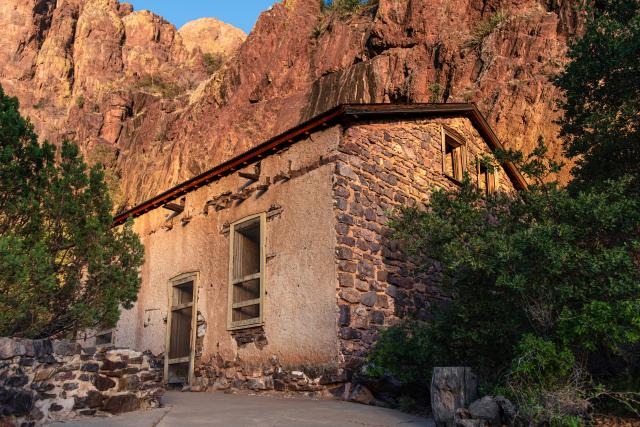
“The attraction is the sense of history that’s relayed by the buildings, but also the natural beauty here at the foot of the Organ Mountains,” BLM New Mexico archaeologist Garrett Leitermann said during a visit on a May afternoon last year. “There’s a lot of beautiful plant life, a lot of wildlife.”
You can see the ruins and interpretive signs along the 1.5-mile Dripping Springs Trail, which fully displays the versatility of public lands, including offering interpretation, recreation, and solitude. At the Mountain Camp, a stabilized building from 1906 overlooks walls, foundations and pathways. At the health resort, commonly referred to as Boyd’s Sanitorium, the kitchen/dining hall and the Boyd residence, both built into the slope of the canyon, sit across from intermittent springs. In an area called the Livery, a general store, grain shed, and other buildings that conducted business associated with the resorts —all stabilized to slow deterioration—sit near remnants of a corral.
Beyond the ruins, plants and animals ornament the area’s natural beauty.
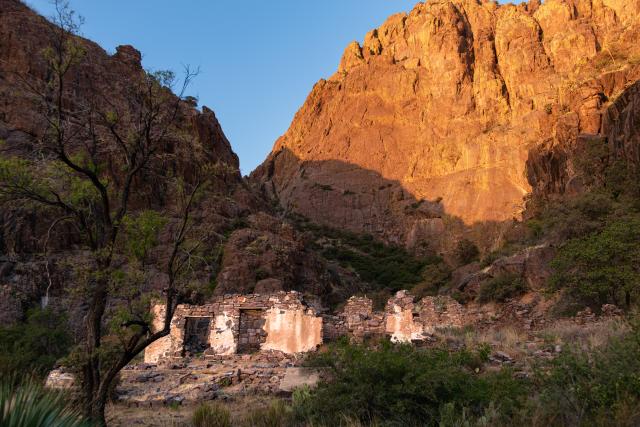
This is home to alligator juniper, gray oak, and mountain mahogany, as well as the Organ Mountain evening primrose and Plank's Catchfly. The landscape supports various wildlife, including mountain lions, coyotes, javelina, ringtails, and mule deer. Birds, reptiles, bats, rabbits, chipmunks and even snails thrive below spires sequestered 9,000 feet above the Chihuahuan Desert floor.
“In addition to the heritage and stories that these places offer, being able to walk in these natural places, and being able to experience nature and the solitude that comes with it is so important,” Leitermann said. “It meets the human need to refresh ourselves from time to time.”
All this ten miles outside Las Cruces, where the Organ Mountains provide a dramatic, yet inviting, backdrop for residents.
“The vast space of earth and sky in New Mexico is its most imposing feature,” wrote Rudolfo Anaya, in his preface to Tierra: Contemporary Short Fiction of New Mexico, a 1989 anthology in which landscapes dictate the pacing of its stories. “Each one of us has a favorite place in New Mexico where we feel a special relationship with the land.”
People have lived on this land for at least 21,000 years, including the Jornada Mogollon people, Manso, Apache, and others whose history and heritage are told through rock art, ceramic fragments, projectile points and many archaeological sites. The landscape remains a popular natural and recreational destination for people in southern New Mexico and West Texas.
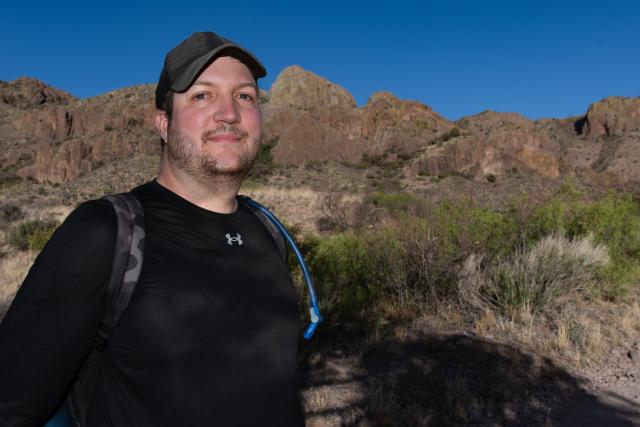
This was the early recreation area that the City of Las Cruces had. More than one-hundred years after, it’s still an important recreation area for people.
Garrett Leitermann, BLM archaeologist
The site is managed as part of the Organ Mountains-Desert Peaks National Monument, recognized for its historical and other values derived from its many rocky peaks, narrow canyons, and wide open stretches of the Chihuahuan Desert. At Dripping Springs, approximately 155,000 visitors visited in fiscal year 2024 to walk the trails and to see the remains of the two successful businesses that declined after years of legal disputes.
Historical documents show that the Van Patten Mountain Camp—owned by Eugene Van Patten—began as a homestead around 1892 and by 1895 had opened as an 8-room resort hotel. By 1906, Van Patten had expanded the property to 32 rooms and a large dining room for weddings and dances. The hotel grounds were beautifully landscaped with an orchard with fruit trees, flower beds and shrubs. The lawn’s iron gazebo hosted live music to accompany Ice Canyon’s naturally cooled air.
Residents from the nearby Mesilla Valley took day trips or booked multiple nights at the Mountain Camp. In its society pages, the local newspapers of Las Cruces and El Paso, Texas, often published lists of visitors and schedules of social events at the resort. People came all day by wagon, buggy or stage line to escape the desert heat and explore the scenic country of the Organ Mountains. Known as “Van Patten’s,” the resort was especially popular with students from New Mexico A & M (now New Mexico State University) in Las Cruces, who came for picnics and hiking.
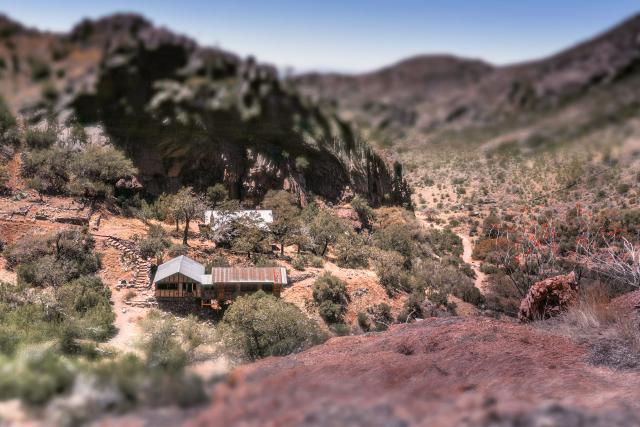
In a side canyon immediately south, Dr. Nathan Boyd ran a health resort that attracted people seeking the cool, fresh air of the mountains and the promises of recuperation. Prior to the development of antibiotics, places like Dr. Boyd’s, which opened in 1904, were recommended by physicians to treat tuberculosis. The local Rio Grande Republican in 1905 highlighted an American Health Resort Association claim that Las Cruces had among the healthiest climates for people seeking to cure their tuberculosis.
Boyd paid a rent of $25 a year (just over $900 today) to Van Patten, who agreed to feed Boyd’s guests for $11 per week per adult (children half-price), provide maintenance, and deliver water. Van Patten also provided "a reasonably good table (including plenty of fresh milk, fresh eggs, fresh butter, fresh meat, and, when in season, plenty of fresh vegetables and fruit),” according to a June 30, 1904, letter of agreement.
To Van Patten, this agreement with Boyd seemed ideal. Van Patten noted that the deal made his development more attractive as a ranch and resort.
Then a long, legal fight began.
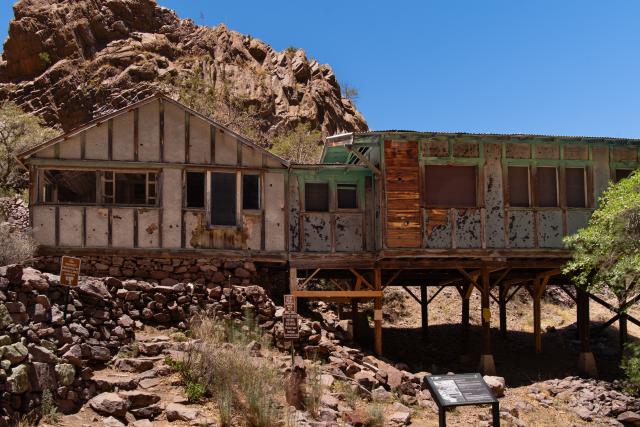
In 1905, Van Patten sued Boyd over unpaid bills, which escalated into other lawsuits over water rights and land titles, a traditional dispute in the developing West, especially in the Chihuahuan Desert, where water is scarce. In one case, Boyd claimed that Van Patten didn’t have proper title to the land as his homestead patent did not include the property on which Boyd built his resort. In another lawsuit, Van Patten said Boyd built a dam which interfered with the Mountain Camp’s water supply and redirected the water to Boyd’s own property.
In 1917, after 12 years of legal battles between the two men, the litigation ended when Van Patten ceded the Mountain Camp to Boyd through a quit claim deed for one dollar. Boyd, who was involved in separate and expensive litigation elsewhere involving water rights to irrigate along the Río Grande, eventually sold the entire site in 1922 to the Sexton family, of Las Cruces. The Sextons in 1940 then sold the property to Nathan Boyd’s son, Robert, who posted the property and surrounding area against public use and recreation. Robert Boyd then sold the property in 1957 to the local Cox family, who ran the property as a ranch.
Backed by local public support, the Cox family, the Nature Conservancy, and BLM later collaborated to develop the property into a conservation and recreational area. The ruins and surrounding property opened to the public in summer 1989 as the Dripping Springs Natural Area. A large musical festival celebrated the milestone.
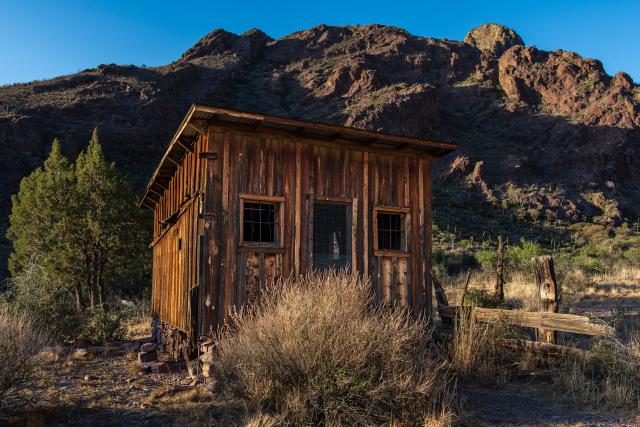
“This was the early recreation area that the City of Las Cruces had,” Leitermann said. “More than one-hundred years after, it’s still an important recreation area for people.”
As visitors cycle through Dripping Springs, earth and sky continue the unhurried work of shaping the ruins to fit the landscape’s narrative.
Plants and shrubs fill empty rooms. Grasses poke through crumbling steps. The high canyon faces, boasting higher resilience to the elements, contrast with the aging walls and peeling skin of the buildings. Wood, metal and stone gain and lose color under roving sunlight and shadow. As the structures become wild and overgrown, the blending of work done by nature and people recalls commentary from the English writer William Gilpin, whose 18th Century travel writings inspired people to seek out and appreciate wild and rugged scenery.
“Nature has made it her own,” Gilpin wrote in Observations on the River Wye, published in 1782, after he visited in Wales the ruins of Tintern Abbey, whose remnants have been celebrated in poetry and painting. “Time has worn off all traces of the chisel: it has blunted the sharp edges of the rule and compass, and broken the regularity of opposing parts.”
With evening pouring into Ice Canyon, we left.
The mountainside’s base rested in purple and blue shadow. High above, stone pillars flared like campfire on the first night of an outdoor adventure. The scene implied a discharge of tremendous energy.
The site closed at sunset. With the landscape setting the pace, daylight lost purchase and slipped over the western slopes of the Organs. An invisible power lifted stars, planets and the full moon into position.
Derrick Henry, Public Affairs Specialist
Related Stories
- Popular posts: BLM's most viewed blogs of 2025
- Take a First Day Hike on Your Public Lands
- Using science to uncover mysteries of the Mesa archaeological site in Alaska
- “Where did my horse come from?” BLM launches a new way for adopters, trainers and others to learn about their wild horses and burros
- Lake Havasu Fisheries Improvement Program is the gift that keeps giving
